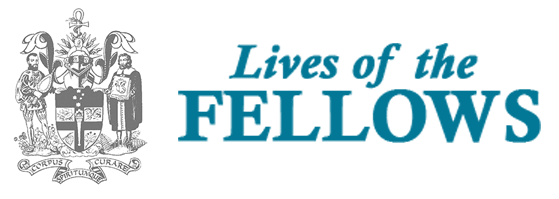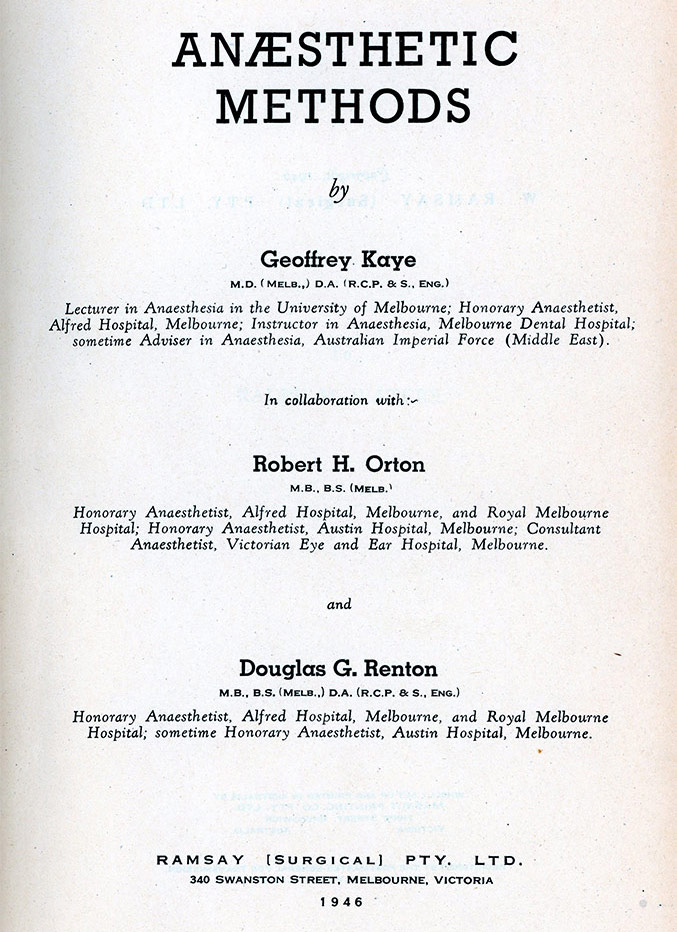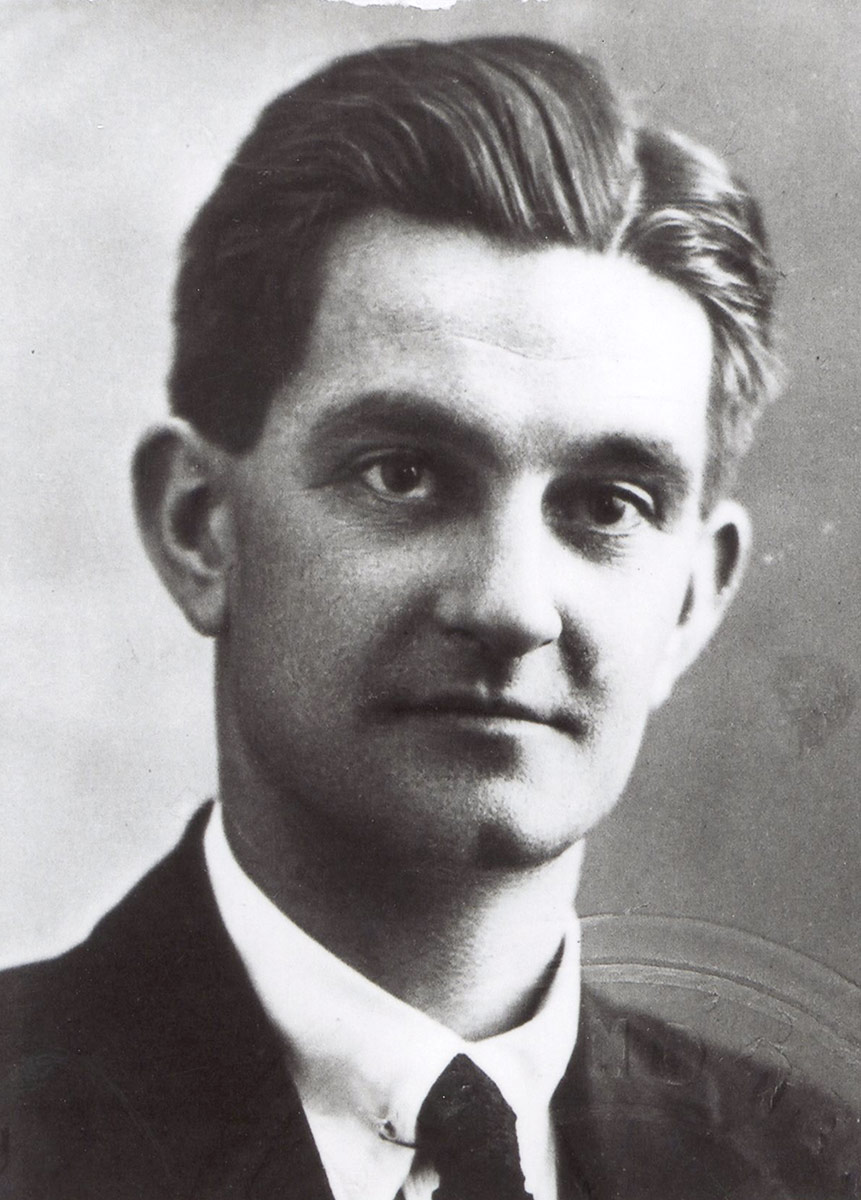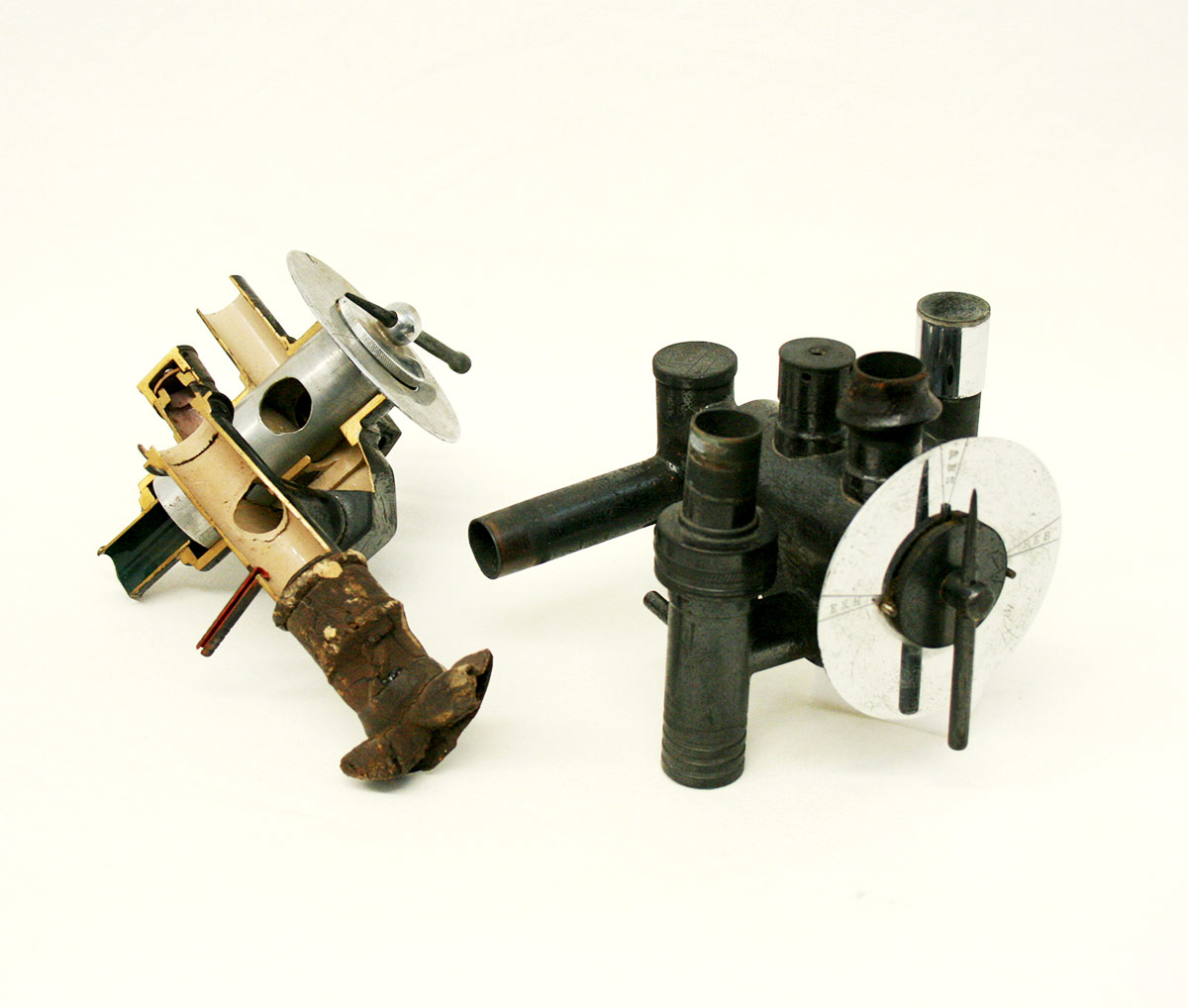NAME: DOUGLAS GEORGE RENTON
QUALIFICATIONS:
MBBS – UNIVERSITY OF MELBOURNE (1922)
DA RCP&S – ENGLAND (1939)
DATE OF BIRTH: 9 MARCH 1899
DATE OF DEATH: 2 MAY 1955
Douglas George Renton, born in 1899 in Parkville, Victoria, was an anaesthetist dedicated to the efficiency and design elements of his profession. Although suffering from ill health at the beginning of his career, Renton spent the years from 1930 until his death in 1955 working tirelessly to advance anaesthetics in Australia. He was a founding member of the Australian Society of Anaesthetists serving as their president from 1949 to 1950. He later became Dean to the Faculty of Anaesthetists, Royal Australasian College of Surgeons (1953). Renton was awarded Fellowship to the Faculty of Anaesthetists in both England and Australia (1950 and 1952 respectively).
Can you add any details to this biography?
If so, complete the Contributor Form.
Douglas George Renton was born on March 9, 1899 in Parkville, Victoria.[i] He attended Scotch College in Melbourne for his primary and secondary education.[ii] After school, Renton enrolled in the University of Melbourne’s Bachelor of Medicine, Bachelor of Surgery (MBBS) degree.[iii] He undertook his residency at the Alfred Hospital in Melbourne from 1922 until 1923 and at the Women’s Hospital in Melbourne from 1923 until 1924.[iv]
From 1924, Renton worked as a general practitioner in Rochester, Victoria. Ill health struck Renton during this period leading to resignation from Rochester and a year of recovery. In 1930, Renton returned to practising anaesthesia, serving as honorary assistant anaesthetist at the Alfred Hospital for one year and the honorary assistant anaesthetist at the Royal Melbourne Hospital until 1940.[v]
As well as his assistant roles, Renton became the full honorary anaesthetist at the Austin Hospital in Melbourne from 1930 to 1936 and honorary anaesthetist at the Alfred Hospital from 1940 to 1946.[vi] Due to his diminishing health, post-1946 Renton worked part time as a neurological anaesthetist in the unit of Dr H.C. Trumble.[vii]
Alongside his professional appointments, Renton was very closely affiliated with the Australian Society of Anaesthetists. He was a significant founding member and served as the society’s President from 1949 to 1950.[viii]
Renton oversaw a significant change in anaesthetics in Australia with the introduction of the Faculty of Anaesthetists, Royal Australasian College of Surgeons. In 1952, Renton served as interim Dean of the Faculty accepting the position of first constitutional Dean from 1953 to 1954.[ix]
Renton’s contribution to anaesthetics in Australia was awarded with a Fellowship to the Faculty of Anaesthetists, Royal College of Surgeons, England, in 1950 and Fellowship to the Faculty of Anaesthetists, Royal Australasian College of Surgeons in 1952.[x] The Royal Australasian College of Surgeons, and later the Australian and New Zealand College of Anaesthetists, additionally memorialise Renton through the Renton prize, awarded since 1958, to the trainee who receives the highest marks in the primary examination for fellowship.[xi]
Amongst his many achievements, Renton contributed greatly to the manufacturing of anaesthetic apparatus. His adoption of the carbon dioxide absorption method was significant to anaesthetics in Australia, shaping the manufacturing of anaesthetic canisters. His dedication to design and efficiency meant Renton was a valuable advisor to manufacturers. His knowledge was distributed in many publications. His most noteworthy being co-authoring Anaesthetic Methods in conjunction with Robert Orton and Geoffrey Kaye.[xii]
REFERENCES
[i] Australian Military Forces, ‘Attestation Form for Special Forces Raised for Service in Australia; Renton, Douglas George’, National Archives of Australia, Canberra, 1918, Series No. MT1486/1 RENTON/DOUGLAS GEORGE.[ii] Terry Loughnan, ‘Series on Past Deans and Presidents’, ANZCA Bulletin, 13, no. 1 (March 2004): 7, ANZCA Archives, Series 11.[iii] Australian Military Forces, ‘Attestation Form for Special Forces Raised for Service in Australia; Renton, Douglas George’; Douglas George Renton, ‘Exordium’, Application Form, 1952, Geoffrey Kaye Museum of Anaesthetic History: VKGM 6903.24.[iv] Australian Society of Anaesthetists, ‘President Profile’, Form, 1949, ANZCA Archives, Series 11.[v] Ibid.[vi] Ibid.[vii] Ibid.[viii] Ibid.; Australian Society of Anaesthetists, ‘ASA Presidents’, 2015, Online: https://www.asa.org.au/ASA/About_us/History_of_the_Society/Past_Presidents/Past_Presidents.aspx.[ix] Australian and New Zealand College of Anaesthetists, ‘Renton Prize’, 2015, Online: http://www.anzca.edu.au/about-anzca/our-awards/renton-prize.html.[x] George Renton, ‘Exordium’.[xi] Australian and New Zealand College of Anaesthetists, ‘Renton Prize’.[xii] Geoffrey Alfred Kaye, Robert H. Orton, and Douglas G. Renton, Anaesthetic Methods (Ramsay: Melbourne, 1946).
IMAGES
- ‘Douglas Renton’, ANZCA Archives Series 148, Item 18.
- Anaesthetic Methods, 1946. Copy in ANZCA library.
- Geoffrey Kaye Museum of Anaesthetic History: VKGM 6917.
- Douglas George Renton, ‘Exordium’, Application Form, 1952, Geoffrey Kaye Museum of Anaesthetic History: VKGM 6903.24.
- ‘Renton Circle Valve Absorber, in section’, Geoffrey Kaye Museum of Anaesthetic History: VKGM 2634.





